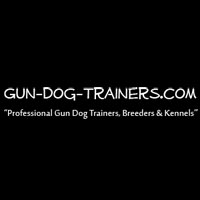Summary of VHDF Testing
Versatile Hunting Dog Federation tests are noncompetitive. Dogs are evaluated against a set standard specifically designed around the collective values of North American hunters and their dogs. These evaluations are designed as a tool for the hunter and breeder to evaluate natural ability and trainability in a public forum. The records for individual dogs, whole litters, lines of dogs, and select gene pools should be useful to breeders for future breeding decisions. The results also will tell owners what areas they should emphasize in future training for an all-around and capable hunting dog.
The VHDF testing and evaluation program is divided into three distinct categories: (1) aptitude evaluation, (2) performance evaluation, and (3) conformation evaluation.
Aptitude Testing
Aptitude testing, for VHDF purposes, refers to an evaluation of the natural ability or capacity of the dog in any one of a number of hunting related subjects that are considered to be inherited. Aptitude testing is particularly important for versatile dogs given the nature of such dogs and the large number of different and sometimes conflicting hunting related aptitudes they are expected to possess.
VHDF offers two levels of aptitude testing. The first level, the Hunting Aptitude Evaluation, is designed to record the level of hunting aptitude in the young dog up to approximately 1.5 years old; however, there are no age requirements. At this age, the dog should have been exposed to game but not seriously trained and thus still exhibit semi-natural aptitude. During the HAE, each dog is evaluated in the aptitudes of Nose, Search, Pointing, Tracking, Water, as well as having Desire and Cooperation evaluated during each of the specific test subjects.
The second level of aptitude testing is the Advanced Hunting Aptitude Evaluation and it is designed for the young dog beyond puppy stage that is fully developed mentally and physically. The abilities of the dog at this level should have been further enhanced through training, therefore giving one a very reliable and detailed evaluation. This level of detailed evaluation is very useful as the primary tool for the hunter and breeder to evaluate natural ability and trainability of individual dogs as well as entire litters. During the AHAE, each dog is evaluated for the aptitudes of Nose, Search, Pointing, and Search behind a duck (which combines tracking and water) as well as having Desire and Cooperation evaluated during each of the specific test subjects. Further, each dog is tested in the trained subjects of Steadiness on Game, Retrieving on Land, Retrieving in Water, Blind Water Entry, and Retrieve by Drag, as well having Obedience evaluated during each of the specific trained test subjects.
Breeders and Breed Clubs are responsible for selecting the future path of their breeds as opposed to the natural selection that occurs in nature. Selection for a dog breeder is the task of choosing the individual animals that will best carry the future of the breed. This task is both art and science. By using some science based on VHDF estimates of hunting aptitudes, breed clubs and breeders may improve their odds of choosing the best individuals that not only produce the most talented offspring, but those with the least number of defects. VHDF Aptitude testing is particularly useful in selective breeding programs that utilize progeny testing to determine the genetic value of a parent or a set of parents. Progeny testing involves inspecting groups of offspring from specific parents. Whereas individual breeders rely mostly on individual selection, breed clubs and groups of breeders are able to pool their resources and utilize progeny testing. In this case, if entire litters of offspring from related parents or groups of offspring from particular sires show above average aptitude in the natural ability subjects, one can reasonably conclude that these parents are genetically valuable because of the quality of their offspring.
Performance Testing
Performance testing, for VHDF purposes, seeks to identify dogs that are fully capable at all levels of work before and after the shot, on land and water, by themselves or in a brace. Performance testing identifies dogs that not only have the necessary hunting aptitudes, but gives further insight into temperament and tractability. Therefore, dogs must complete significant training in order to accomplish the required tasks.
The VHDF Performance Evaluation is designed to evaluate the fully finished versatile dog. The PE is the highest level of competency for dogs within the VHDF system. The Performance test should serve as the definitive evaluation for hunters and breeders who seek to test their dog's ability as well as their own training skills at the highest level. During the PE, each dog is evaluated in the aptitudes of Nose, Search, Pointing, Search behind a duck, Water search without a duck, and Backing or honoring a bracemate's point. Further, each dog is tested in the trained subjects of Blind Water Retrieve, Steadiness on Game, Retrieving by Land, Water, and Drag, as well as having Desire, Cooperation, and Obedience evaluated throughout the entire test.
While the inherited aptitudes are still evaluated in the PE, the main focus is on the overall performance of the dog handler team to accomplish the task at hand; such as remaining steady through the fall or recovering a duck on the blind retrieve. VHDF considers the PE to be the most valuable test for individual breeders to utilize for individual selection since it incorporates all the aptitudes, as well as gives insight into temperament and trainability. In addition, hunters and trainers seeking to measure their training methods and suitability of their dog as a reliable and competent hunter before the shot, after the shot and in the company of a companion's dog will find the PE to be a useful evaluation.
Conformation and Structure Evaluation
The final component of the VHDF testing program is the Conformation and Structure Evaluation. The CSE is a detailed evaluation of every part of the dog from head to toe with a major emphasis on proper structure and movement in the field. Coat quality is also evaluated in detail. The CSE is not designed to compete with or supersede breed shows offered by breed clubs, as we cannot offer the level of detail that the specific breed specialist judges can. What we do offer is information for the individual breeder that otherwise has no access to such knowledge. Too often in North America, there is a split between conformation and performance. While some gun dog breeders do take a dual or total dog approach; the fact is, most specialized show dogs are bred to win in the show ring and usually have little or no field much less water ability. While it is somewhat true that form follows function, most field dogs are never evaluated for truly proper angles and movement. This evaluation will allow breeders to improve overall health of their dogs as well as serving to increase durability in the field and longevity in general. Further, these coat and conformation evaluations are recorded in our database, and the information which is useful to breeders and hunters, is readily available.












